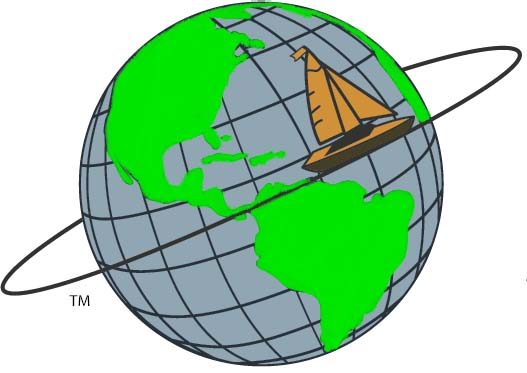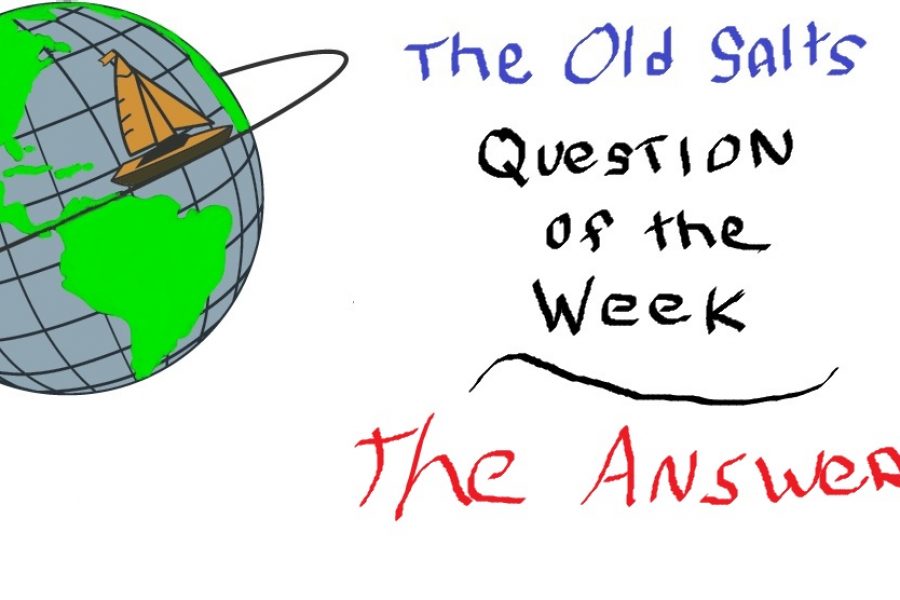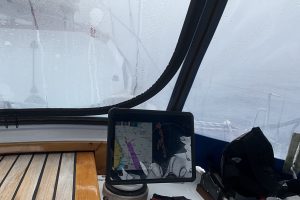This week’s questions had to do with the Language of the Sea. Often sounding like a foreign language to Green Hands and non-seaman it has been developed over the centuries to describe vessels and a vessel’s actions and direction on water, water that is usually devoid of the landmarks and structures we rely on to navigate on land.
Question 1 asked When, is a vessel considered Underway? The answer is “Anytime it is not in some fashion or other tethered to a dock, a mooring or at anchor. Meaning it is free to move about either under its own power or at the mercy of wind and tide.
A vessel “Underway” can be sitting still in the water and would be considered “Underway, not making way,” though she could still be moving about, drifting with wind and tide.
Question 2 asked, What, are the 5 directions that describe a boat’s motion through the water.
- Pitching; Fore and aft up and down motion. Sometimes called “Hobby Horsing”, especially if it has been accentuated by improper loading of stores, particularly heavy items stowed in the bow or stern.
- Roll; Side to side rotational movement
- Yaw; When a boat is “Yawing” its bow is swinging side to side, sometimes accentuated by oversteering and sometimes caused by following seas pushing the stern around.
- Heave; The vertical up and down movement of a vessel caused by wave action
- Sway; Describes a vessel’s horizontal sideways motion, while sway does occur as we sail, especially on a beam reach, worst-case description of “Sway” would be when a wave strikes a vessel on its beam and pushes it sideways. Sway is at its worst when a vessel is “Laying A-hull”, meaning she has taken down her sails, is just laying at the mercy of wind and wave and drifting sideways. Because of the danger of being rolled past 120° Laying A-hull should be avoided.
To one extent or another, all five motions or directions can seemingly occur at the same time, some can be controlled by steering, some can be reduced by proper loading of stores, some can be reduced or prevented by altering course in relation to the seas. Some of these motions can also be increased by design flaws, some are also just the results of a particular design that was intended for one specific purpose, such as racing, but the vessel was later converted to be used for cruising, in this case, some motions like a very snappy roll, either have to just be lived with or the vessel traded for one with more benign characteristics.
Question 3 asked, What has happened when a vessel has broached? Basically, the helmsmen, either through inattention or because conditions have overwhelmed the rudder’s ability to control the boat, has lost control and the vessel has been forced to turn sideways to the seas. Sometimes this happens violently, causing damage to the hull and/or cabin, especially if in the process the vessel is laid on her side and had her decks swept by a passing sea.
In heavy conditions a following sea can force a boat stern to one side or the other, overwhelming the rudders ability to control direction, or as a large steep wave passes under, a boats’ bow can dig in causing the boats’ stern to swing wildly out of control in the same direction as the stopped bow. Ie… as the port bow digs in the stern is going to continue to port, out of control.
A broach can also be caused by carrying too much sail area forward in too much wind. This most frequently occurs when a spinnaker is carried too long in heavy conditions, sooner or later a combination of a gust and/or a following sea will cause the boat to swing wildly out of control and sideways to the seas.
Unfortunately, when a spinnaker is involved the first broach is usually not the last, as when the broach occurred the spinnaker pole was dipped into the water and it along with a portion of the sail, together they are now a more effective rudder than the ship’s rudder, causing the boat to pivot around so when she stands upright the spinnaker refills on the opposite tack and causes another broach and knockdown, now with the main boom and sail in the water the boat pivots again and everything repeats. These actions can continue until something breaks or the spinnaker is cast off and control regained. All this happens relatively fast and is one very wild scary ride. One every racer strives mightly to avoid!!
Question 4 asked, Which, of the directions or motions in question 2 was likely to cause a broach? The answer would be Yaw. If yaw, the swinging of the bow from port to starboard becomes too great, then a broach can easily follow. While poor helmsmanship can cause a broach one is more likely to occur because a following sea has picked up the stern and thrown it sideways overwhelming the rudder’s ability to control direction.
Motion on the Ocean is the bain of all sailors, it cannot be avoided, it can, however, be reduced by properly trimming of sails, properly loading stores (keep weight low down and close to center fore and aft), keeping decks clear of any type of cargo, but especially heavy items like full fuel and water jugs. (any heavy gear stowed on deck will detrimentally affect a vessel’s roll period), good helmsmanship, and selecting a course for best motion based on your destination, sea and weather conditions, and navigational hazards.
More than once we have radically altered course to a different unintended destination because wind and sea conditions in the direction of our original destination were just too uncomfortable. We’ve never regretted the sudden change in plans and have almost always had a very fast and pleasant sail to our new unintended port of call. On the flip side, sometimes we’ve just had to continue on our miserable, uncomfortable way as there were no other options available.







Leave a Reply
Your email is safe with us.